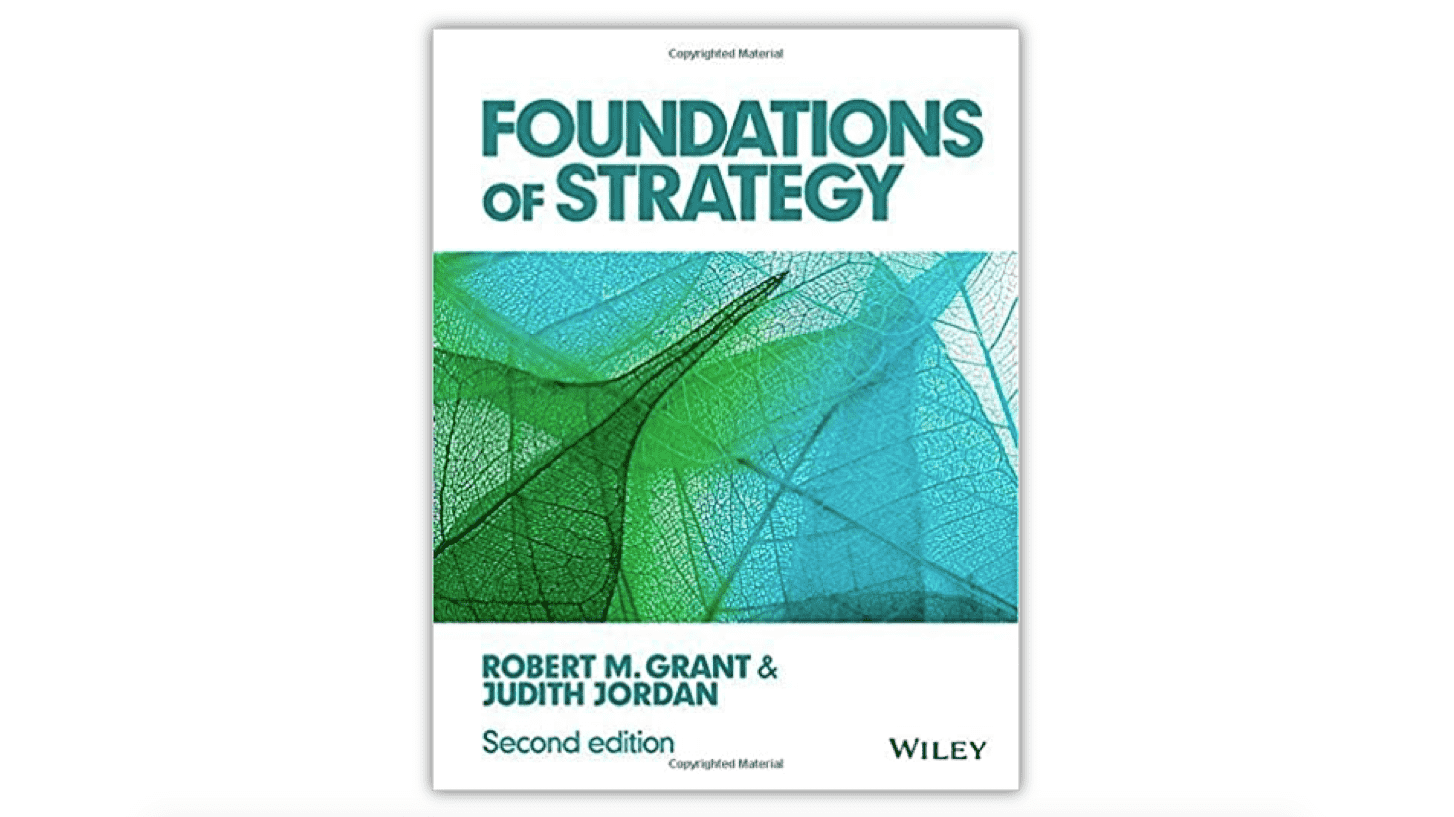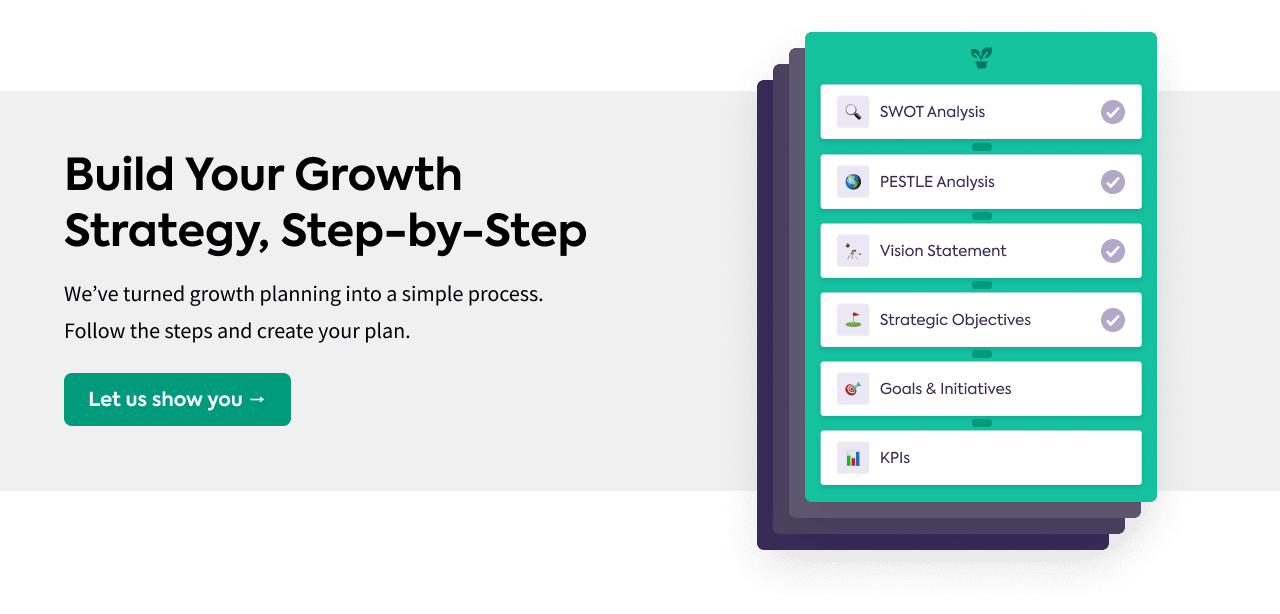Grant and Jordan’s Foundations of Strategy is primarily aimed at university business students, both undergraduate and Masters level. However, we’d suggest that it’s wide-ranging introduction to strategy management will provide a solid grounding for any senior executive looking to effectively manage the strategic planning process within their organization.
The authors’ examination of strategy is illustrated by case studies of well-known individuals and of organizations, both private sector and not-for-profit, from Lady Gaga to Harley-Davidson. It also explores several tools and frameworks, such as PEST and Porter’s Five Forces.

The book begins with an excellent definition of Strategy: “Strategy is about success. It is not a detailed plan or programme of instructions; it is a unifying theme that gives coherence and direction to the actions and decisions of an individual or an organization.”
5 Key Trends in Strategic Management
It follows by summarizing the five main developments in strategy management over the past 60 years, from financial budgeting in the 1950s through the quest for competitive advantage in the 1990s to adapting to turbulence in the past decade.
These trends were:
1. Financial Budgeting
Prevalent in the 1950s and 1960s, annual financial planning and investment appraisal gave short-term control and assisted project selection, but did little to guide the long-term development of the firm.
2. Corporate Planning, Based on Macroeconomic Forecasts
This trend emerged in the late 1950s. This typically manifested itself in five-year plans that set goals and objectives, forecast key economic trends, established priorities for the company’s business units and products, and allocated capital.
3. Strategic Management
This emerged as a trend in the 1970s as a reaction to the oil crises of 1974 and 1979 and failure of corporate planning to meet expectations. This shifted the focus on to competition and competitive advantage as the main goal of strategy.
4. The Quest for Competitive Advantage
In the 1980s and 1990s there was an emphasis on internal resources and capabilities which encouraged firms to identify how they were different from their competitors and to create strategies that exploited those differences. This movement was led by Michael Porter with his books Competitive Strategy and Competitive Advantage. This emphasis was accompanied by refocusing, outsourcing, de-layering and cost cutting.
5. Adapting to Turbulence
In the 21st century new challenges have continued to adapt the principles and practice of strategy. Digital technology, disruptive innovation and accelerating rates of change have meant that strategy is less about plans and more about creating options for the future, strategic innovations and pursuing ‘blue oceans’ of uncontested market space (see our piece on Blue Ocean Strategy). Other emerging influences are sustainability and corporate social responsibility.
Read Corporate Strategy VS Business Strategy: What’s the Difference?
Strategy in the Present Time
The book moves on to strategy in the present time. It discusses corporate versus business strategy. Corporate strategy defines the scope of a firm in terms of industries and markets in which it competes. Business strategy, often called competitive strategy, is concerned with how the firm competes within a particular industry or market. The book makes the point that strategy is not only about competing for today; it is also concerned about preparing for tomorrow – in other words, strategy as direction.
The authors identify four elements of successful strategy:
- Simple, consistent, long-term goals
- Profound understanding of the competitive environment
- Objective appraisal of resources and capabilities
- Effective implementation through structure and systems
Strategic Fit
They also describe the concept of strategic fit – for a strategy to be successful, it must be consistent with the firm’s external environment and with its internal environment of goals and values, resources and capabilities and structure and systems. The internal environment will have to be adjusted to maintain alignment with evolving strategies.
Discussion of the internal environment of a firm concentrates on the role that resources and capabilities play in developing strategy. The book uses real-world examples to show how to identify resources – tangible, intangible and human – and seven categories of organizational capabilities, and how to develop their implications for strategy.
The Different Approaches to Strategy Analysis
Rationalist
The authors’ discuss two differing approaches to strategy analysis in the book. Grant and Jordan themselves favour the Rationalist approach, that purports that strategy is the result of managers engaging in deliberate, rational analysis. This approach, as advocated by Ansoff and his disciples, is heavily influenced by military strategy and takes the following steps
- Describe, understand, analyze the environment
- Determine a course of action, based on the analysis
- Carry out the course of action
In other words, appraise, determine, act. The corporate equivalent is SWOT – the analysis of corporate strengths and weaknesses in the light of external opportunities and threats. It can be thought of as “ready, aim, fire”.
Incrementalist
The alternative approach, advocated by Mintzberg and his followers, is the Incrementalist approach and is based on the following assumptions:
- Complete understanding of complexity and change is impossible
- Firms only have imperfect knowledge
- Make deliberate changes towards a stated objective
- Measure and evaluate the effects of changes
- Adjust the objective and decide the next step
This approach is also known as incrementalism, trial & error, “suck it & see”, muddling through. Given the conditions of uncertainty, “incrementalists” argue that the complete understanding of complexity and change is impossible; our ability to comprehend the present and to predict the future is therefore inevitably limited. As a consequence, successful practitioners generally follow incrementalist strategies that recognize that the firm has only imperfect knowledge of the environment, of its own strengths and weaknesses, and the likely rates and directions of change in the future. It must therefore be ready to adapt its strategy in the light of new information and understanding, which it must consciously seek to obtain. In such circumstances, the most efficient procedure is as above.
Grant and Jordan discuss Mintzberg’s distinction between intended strategy, strategy as conceived by the top management team; an outcome of negotiation, bargaining and compromise that he calls emergent strategy, leading to realized strategy. This is the strategy that is actually implemented; it is only partly related to that which was intended (Mintzberg suggests only 10-30% of intended strategy is realized). Grant and Jordan cite Honda’s entry into the US motorcycle market – haphazard entry with little analysis and no clear plan; the strategy looked great in hindsight, but they really made lots of mistakes before stumbling on the right formula.
Industry Analysis
The book next discusses how to conduct industry analysis to identify sources of profit in the external environment of a business, using a number of frameworks. PEST and PESTLE give a simple but systematic approach to factors likely to shape an industry’s competitive conditions.
Porter’s Five Forces framework sees the profitability of an industry as being determined by five competitive forces, to which the book adds another (which you can read more about in our article on Six Forces Analysis). The authors discuss how to identify key success factors by exploring two questions – what do customers want? And what does the firm need to do to survive competition?
A company’s ‘core competences’ (made up of their resources, capabilities and internal expertise) can become the basis for their strategy – it’s what will allow them to build and sustain competitive advantage. This is the lead that a firm has over its competitors in the same market. The authors discuss external sources of change that can lead to competitive advantage, and internal sources, especially innovation in products, business models and “blue oceans”. They also discuss how to make strategic moves that sustain advantage as rivals catch up. Porter’s Value Chain Analysis can be used for identifying ways both to cut costs and improve differentiation over competition.
Grant and Jordan go on to discuss industry evolution, dominant designs and strategic change. They introduce the four stages of product and industry lifecycles – introduction, growth, maturity and decline. These happen at different rates in different product and industry segments, with implications for competition and strategy. The book leads us into managing organizational adaption and strategic change, discussing why change is so difficult and how firms can anticipate change and shape their futures.
Technology-based industries and management of innovation are covered, discussing competitive advantage and strategies to exploit technology innovation. The choice of strategy depends on the characteristics of the innovation and the capabilities of the firm. There is an interesting discussion, with examples, of whether it is better to be a first mover or a close follower in technology innovation – large, well-resourced companies are well placed to succeed as close followers.
Business Strategy Versus Corporate Strategy
Foundations in Strategy, up to this point, has focused on business strategy, how a company competes. Corporate strategy, where a company competes, is tackled next. It discusses a company’s scope – product scope (breadth of products), vertical scope (whether or not a company’s supply chain is integrated and owned by that company) and geographical scope. They introduce three concepts that are key to analysing strategic directions in scope – economies of scope, transaction costs and cost of corporate complexity. This leads on to a discussion of the pros and cons of diversification, vertical integration and outsourcing, using a number of matrix tools to position the strategies of different businesses.
There are also insights into how to manage strategy across a corporate portfolio of businesses, using the GE/McKinsey Portfolio Planning Matrix, the BCG Growth-share Matrix and the Heartland Matrix.
The authors discuss internationalization and globalization, driven by exporting, licensing and foreign direct investment, and how this creates threats and opportunities, and the need to adapt strategy and organizational structure. They discuss patterns of globalization and analysing competitive advantage in an international context, where comparative advantage can be an important factor. A country has a comparative advantage in those products that make intensive use of those resources available in abundance in that country.
Globalization is covered in greater detail in the book Reverse Innovation, one of our Best Books on Innovation Strategy.
Realizing Strategy
The book moves to the topic of realizing strategy – linking strategy to action and to organizational design and organizational culture. Strategy development must keep in mind the ability to implement that strategy. The authors contend that the key to strategy execution is to link the strategy process to action, through the operation plan; to motivation and accountability, through performance management; and to resource allocation, through budgeting.
The way in which a company organizes itself is fundamental to the effectiveness of its strategic management. The book discusses three established types of organization – functional, multidivisional and matrix, with their strengths and weaknesses and criteria for choosing and even for switching between them. It also describes more recent trends in organizational design – Delayering; Adhocracy and team-based organization; Project-based organizations; Network structures, and Permeable organizational boundaries.
A discussion of current trends in strategic management, including complementarity research and complexity theory, completes the book.












